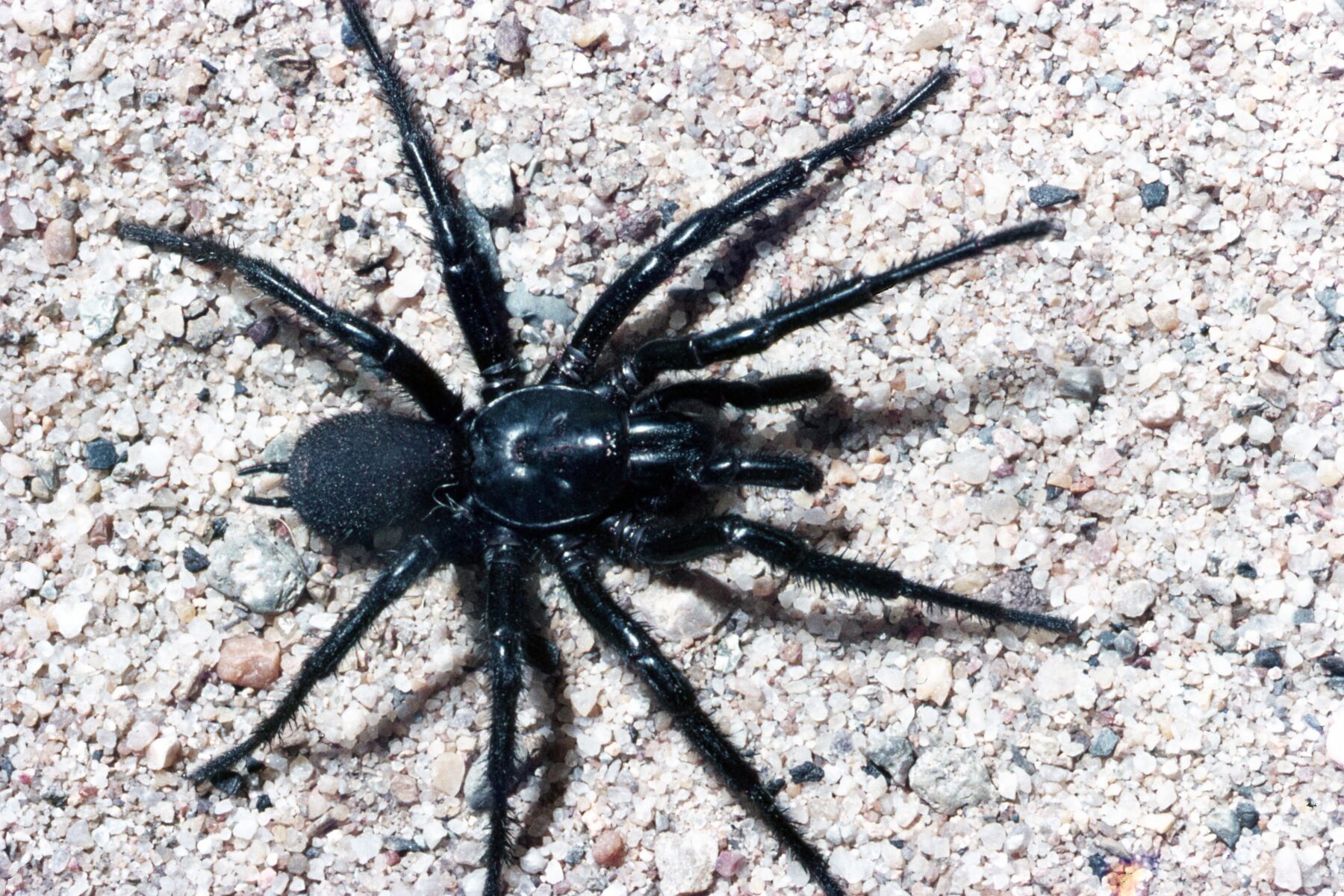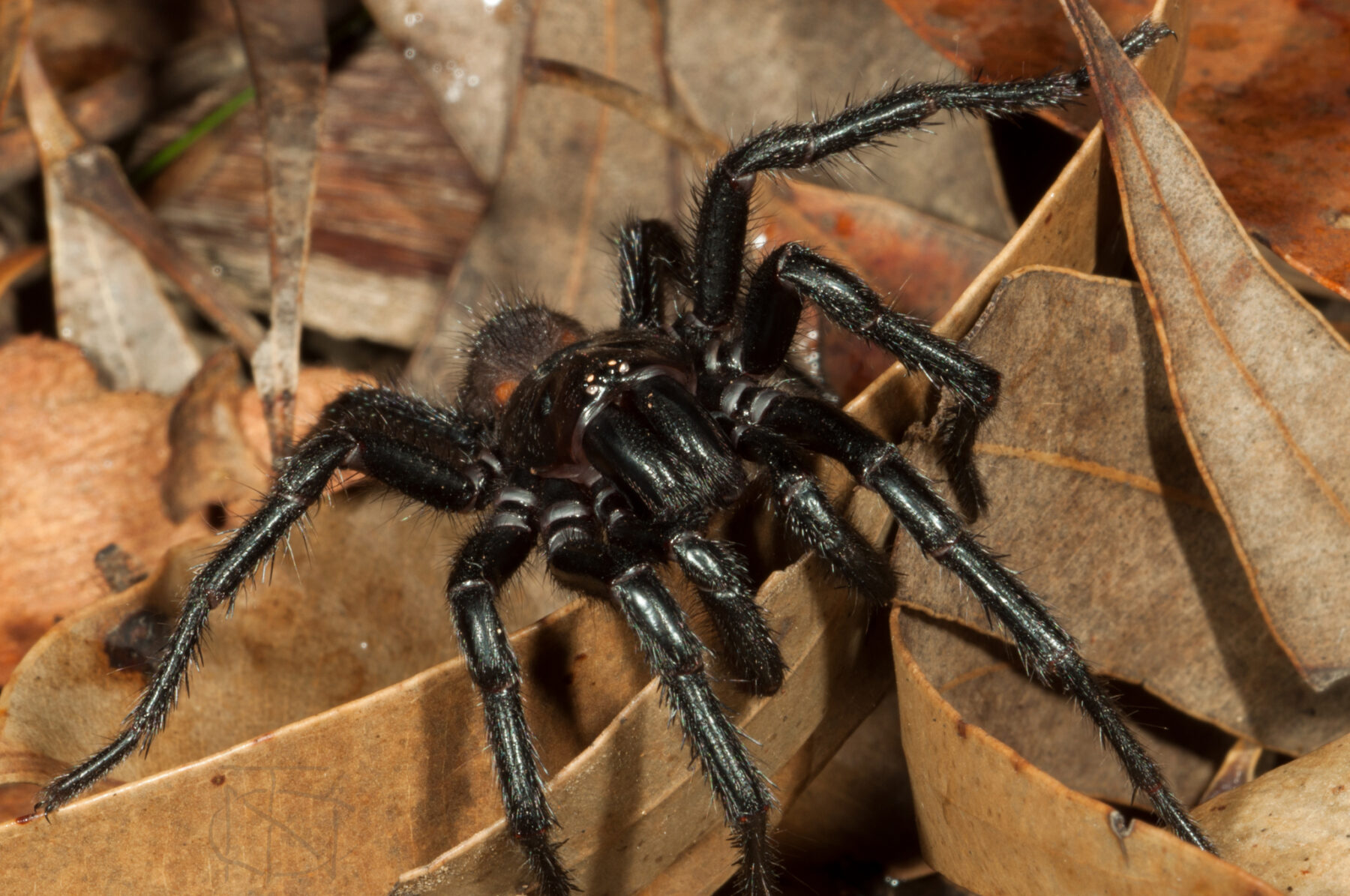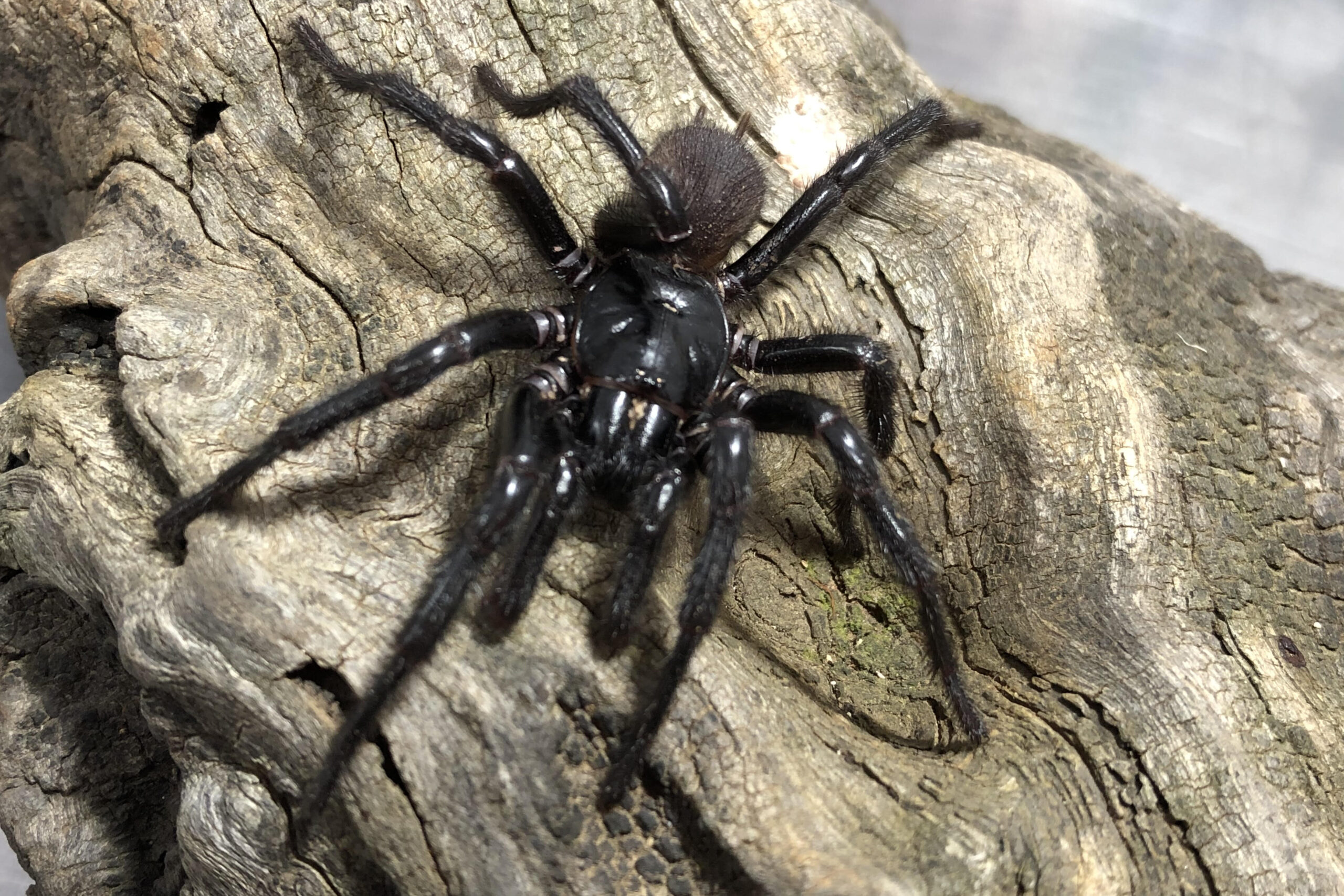Sydney funnel-web spider found to be three different species

Spider experts have long suspected the Sydney funnel-web was more than one species because there’s such a range in the size and anatomy of individual spiders.
Now an international team of scientists has confirmed this.
The research, published in BMC Ecology and Evolution, identified the three species by analysing specimens from the Australian Museum and the Australian Reptile Park.
Who’s who
The ‘original’ Sydney funnel-web (Atrax robustus) is found throughout metropolitan Sydney.
The two newly recognised species are the southern Sydney funnel-web (Atrax montanus), which has a distribution that overlaps with A. robustus and extends to the Blue Mountains region south and west of Sydney; and the Newcastle funnel-web (Atrax christenseni), also known as ‘Big Boy’, which is found further north in Newcastle.
1. Sydney funnel-web (Atrax robustus)

2. The Southern Sydney funnel-web (Atrax montanus)

3. The Newcastle funnel-web (Atrax christenseni)

Size matters
Male Newcastle funnel-webs are the easiest to identify.
“Newcastle funnel-web males have got a much longer and thinner mating organ [called] the pedipalp,” says research co-author Dr Helen Smith, an arachnologist at the Australian Museum.
“The males of the other two species, you can’t easily tell them apart. [Looking] under a microscope, you can line them up and look at the relative lengths of the different parts of the male mating organs, and also the curvature of the embolus [the syringe-like organ in males that squirts sperm into females]. They’re very fine differences.”
Identifying females within the three species is more challenging. Scientists must dissect specimens and examine their internal structures. The shape of the spermathecae – the organ that receives sperm – indicates the species.
Big boys
Reproductive organs aside, Newcastle funnel-webs are generally the largest of the three species.
This species was named A. christenseni after Kane Christensen, an arachnophile from the Australian Reptile Park on the Central Coast of New South Wales.
Since 1981, staff and volunteers at the Australian Reptile Park have milked funnel-webs donated by the public for its antivenom program. Kane joined the zoo in 2003 and, over time, began noticing differences in their palps (male copulatory organs).
He also realised the biggest funnel-webs all came from Newcastle.
Kane’s hunch that there was more than one species of funnel-web was shared by the late arachnologist Dr Michael Gray at the Australian Museum.
“Mike worked on funnel-webs for his PhD thesis back in the 1980s,” Dr Smith says. “He would see all this variation, but it was all so intermixed…and complicated.”
The Australian Museum houses the world’s largest historical collection of funnel-web spiders. Dr Gray joined the museum in 1968 as assistant curator of arachnology. When he retired in 2009, its arachnology collection had grown to one of the largest in the Southern Hemisphere.
Specimens from this collection helped verify the distributions of the three species.
What now?
It’s not yet known how the venom differs between the three funnel-web species. But researchers are optimistic this discovery will have practical implications for antivenom production and spider venom research in the future.
“Current antivenom successfully treats all funnel-web bites,” Dr Smith says. “It’s not only effective against Sydney species, it’s effective against all other funnel-webs and even against mouse spiders, which are a completely different family but are now thought to be related.
“At the moment they’re taking antivenom from a mix of species, so we don’t know whether that’s actually a good thing or a bad thing.
“Identifying the species may help fine-tune antivenom production…[or] it may have no effect on the antivenom. But it will certainly have a major effect elsewhere in venom research.”



